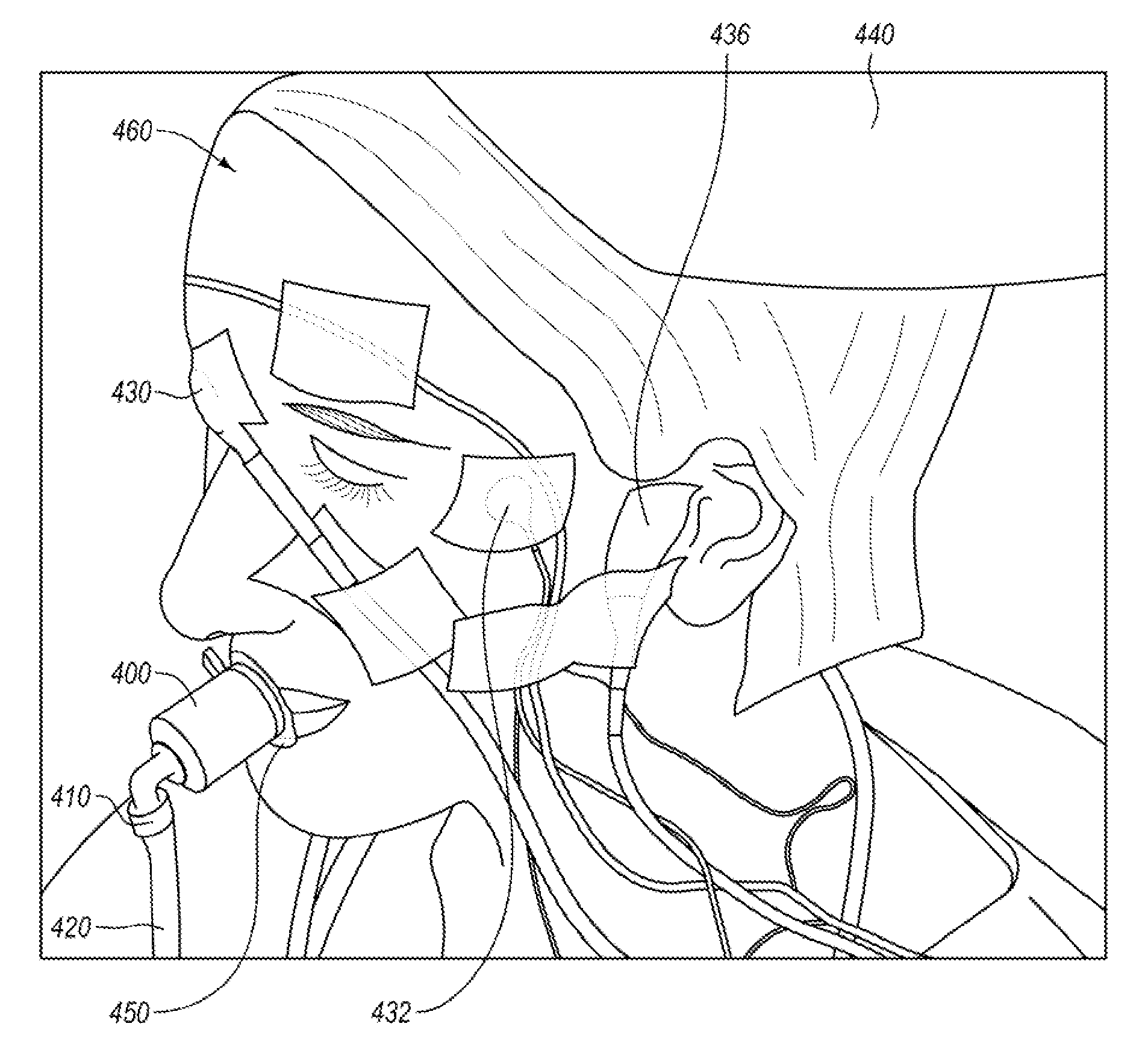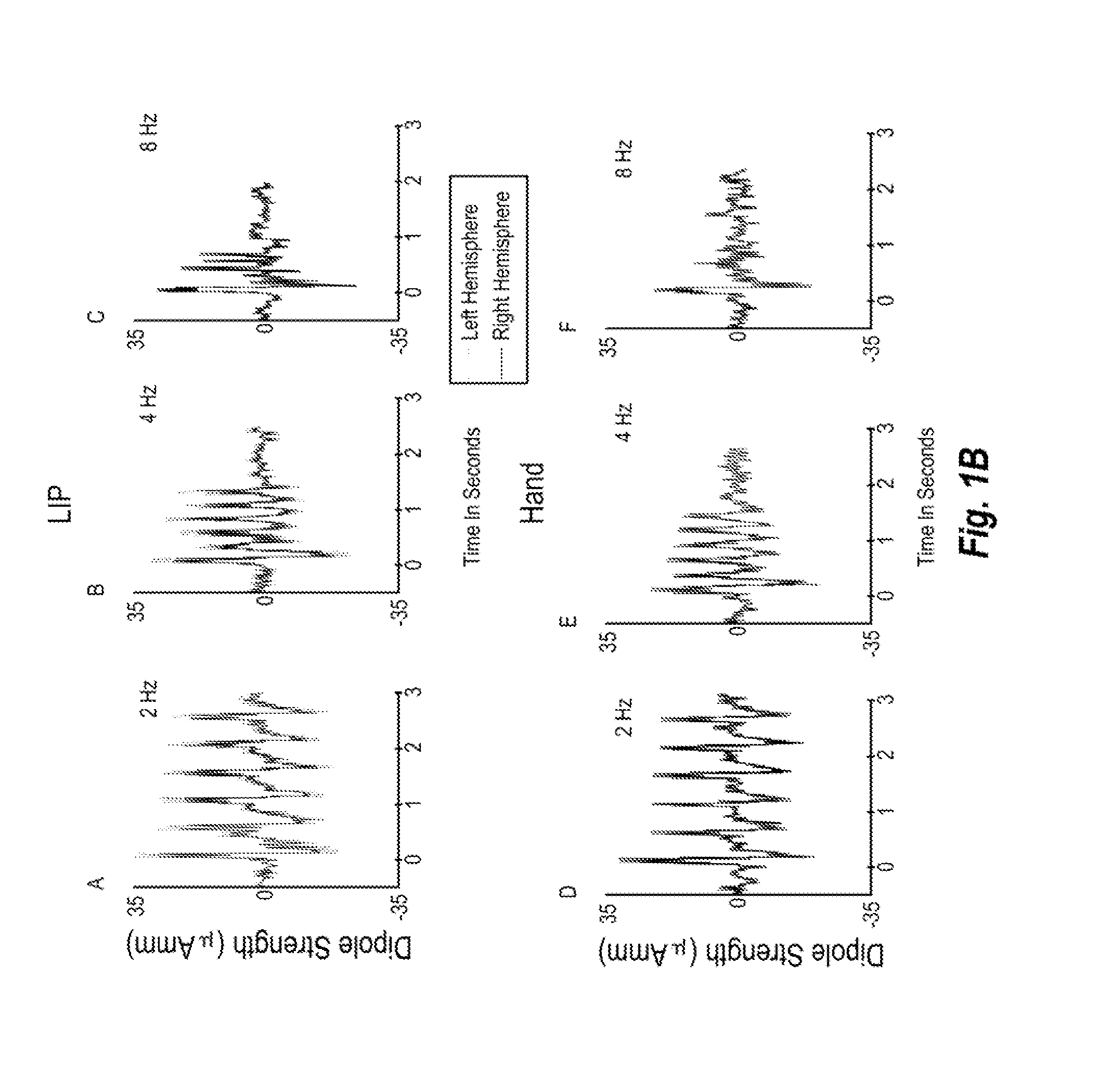Device, system, and method for mechanosensory nerve ending stimulation
a mechanosensory nerve and end stimulation technology, applied in the field of mechanosensory nerve end stimulation devices, systems and methods, can solve the problems of large source current requirements, limited displacement amplitude of piezeoelectric transducers, and interference in neuromagnetic recordings of electrical stimulation, so as to achieve sufficient flexibility and vibrate the skin
- Summary
- Abstract
- Description
- Claims
- Application Information
AI Technical Summary
Benefits of technology
Problems solved by technology
Method used
Image
Examples
Embodiment Construction
[0043]Generally, the present invention relates to the use of the relatively high temporal resolution of the MEG technique with skin stimulating vibration in milliseconds to compare and characterize the short-term adaptation patterns of the nervous system (e.g., using human hand and lip stimulating vibration) primary somatosensory cortex S1 in response to trains of synthesized pneumatic cutaneous stimuli provided by the skin stimulating vibrations. The spatial resolution of MEG has proved sufficient to map the S1 representation of the human body including the lips, tongue, fingers, and hand, but can be used on other body part as Well. Although previous studies have shown that a vibrotactile adaptation mechanism exists in both hand and face, little is known about the short-term adaptation mechanisms of either hand or face S1 to repeated punctate mechanical stimuli in humans. The stimulating vibration can be induced using a MR1 / MEG compatible tactile stimulator cell (TAC-Cell). It is t...
PUM
 Login to View More
Login to View More Abstract
Description
Claims
Application Information
 Login to View More
Login to View More - R&D
- Intellectual Property
- Life Sciences
- Materials
- Tech Scout
- Unparalleled Data Quality
- Higher Quality Content
- 60% Fewer Hallucinations
Browse by: Latest US Patents, China's latest patents, Technical Efficacy Thesaurus, Application Domain, Technology Topic, Popular Technical Reports.
© 2025 PatSnap. All rights reserved.Legal|Privacy policy|Modern Slavery Act Transparency Statement|Sitemap|About US| Contact US: help@patsnap.com



